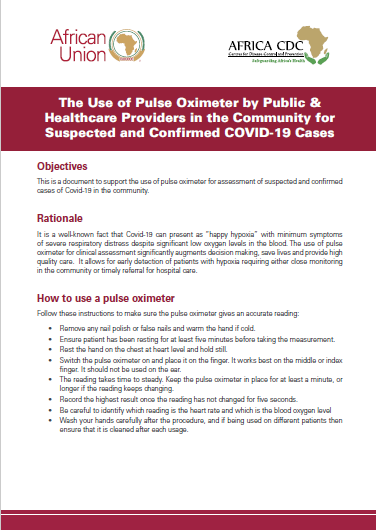Objectives
This is a document to support the use of pulse oximeter for assessment of suspected and confirmed cases of Covid-19 in the community.
Rationale
It is a well-known fact that Covid-19 can present as “happy hypoxia” with minimum symptoms of severe respiratory distress despite significant low oxygen levels in the blood. The use of pulse oximeter for clinical assessment significantly augments decision making, save lives and provide high quality care. It allows for early detection of patients with hypoxia requiring either close monitoring in the community or timely referral for hospital care.
How to use a pulse oximeter
Follow these instructions to make sure the pulse oximeter gives an accurate reading:
• Remove any nail polish or false nails and warm the hand if cold.
• Ensure patient has been resting for at least five minutes before taking the measurement.
• Rest the hand on the chest at heart level and hold still.
• Switch the pulse oximeter on and place it on the finger. It works best on the middle or index finger. It should not be used on the ear.
• The reading takes time to steady. Keep the pulse oximeter in place for at least a minute, or longer if the reading keeps changing.
• Record the highest result once the reading has not changed for five seconds.
• Be careful to identify which reading is the heart rate and which is the blood oxygen level
• Wash your hands carefully after the procedure, and if being used on different patients then ensure that it is cleaned after each usage.
